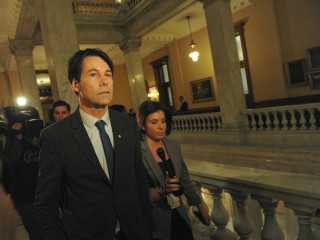Full Decision
Proper jury questions on causation in a medical malpractice case with multiple defendants
The Plaintiff, Carmen Doobay, presented at hospital with, what she alleged, were signs and symptoms of a stroke. She claimed that the treating emergency professionals, a nurse and a physician, failed to recognize those signs and symptoms and thus failed to treat her properly by way of thrombolytic therapy, thereby causing her to suffer a severe brain injury.
The action proceeded to a trial before a jury. At the end of the trial, a dispute arose as to how the jury questions should be crafted on two main issues: 1) the causation language: “caused or contributed to” v. “but for”; and 2) whether the jury had to give reasons for their findings on whether the defendants breached the standard of care.
Causation Language – “caused or contributed to” or “but for”:
Justice Bale reviewed various appellate decisions on causation questions. In particular, he reviewed Sacks v. Ross1, in which the Ontario Court of Appeal held that the traditional “but-for” causation language was problematic in the circumstances of that case because there were multiple defendants and the precise impact of each defendant’s negligence was impossible to determine with any specificity. In Doobay, however, the defendants argued that Sacks was in conflict with the Court of Appeal’s decision in Surujdeo v. Melady2, (decided before but in the same year as Sacks) which held that the use of the traditional “but-for” causation language was appropriate.
Justice Bale held that the two decisions were not irreconcilable but that, in any event, Sacks should be followed because, among other reasons, in delayed medical diagnosis and treatment cases:
…a plaintiff must establish that the delay caused or contributed to the unfavourable outcome…The phrase “caused or contributed” originates in the Negligence Act and is the normative test applied by this court, as set out in Sacks v. Ross, at para. 117, and embodied in the “but for” test prescribed by the Supreme Court in Clements v. Clements at para. 8. 3
Justice Bale held that, contrary to the defendant’s arguments, the “cause or contributed to” language would not confuse the jury. Rather, and given that the plaintiff’s allegations were that the defendants not only each committed individual breaches of the standards of care, but that her injuries also resulted from the defendants’ collective failure to work together, it would be confusing if the jury was asked, “whether the plaintiffs have proven that but for a defendant’s breach, the injuries would not have occurred”.4
In the end, Justice Bale agreed with the plaintiffs and the causation was question framed as: “Have the plaintiffs satisfied you, on a balance of probabilities, that [defendant]’s breach of the standard of care caused or contributed to the injuries of Carmen Doobay?”
Whether the jury had to give reasons for their findings on whether the defendants breached the standard of care:
On this issue, the defendants insisted that, as part of the question on whether the defendants breached the standard of care, the jury should be asked to provide reasons for their findings. Their argument was based on various decisions, including Sacks, supra and Cheeseman v. Credit Valley Hospital5 in which similar requirements were imposed on juries.
Justice Bale disagreed. In brief reasons, he cited the DIVJI: Civil Jury Instructions from British Columbia 6which noted that jurors were entitled to have their own findings of facts to support their decisions so long as they were unanimous in their conclusions. Without overruling Sacks or Cheeseman, he cited Poonwasee v. Plaza7, in which the court held that there were advantages and disadvantages to requiring jurors to provide reasons and that trial judges had discretion on how to decide in any particular case. Further, he noted that jurors have no legal training, and that requiring them to give reasons could be unworkable and prevent jurors from fully expressing themselves.
He ended his decision rather bluntly:
There are many ways in which trial judges can help ensure a just verdict by helping jurors to better understand what is required of them. In my view, asking them to provide reasons for their verdicts is not one of them.
- 2017 ONCA 773
- 2017 ONCA 41
- Quoting from: White v. St. Joseph’s Hospital (Hamilton), 2019 ONCA 312 at para. 25.
- Paras. 20-25
- 2019 ONSC 4996
- Jennifer Power, Ronald Skolrood & Lisa Warren, CIVJI: Civil Jury Instructions, loose-leaf (Feb. 2020 update), 2nd ed. (Vancouver: The Continuing Legal Education Society of British Columbia, 2009), Appendix C, note 2
- 2018 ONSC 3797















